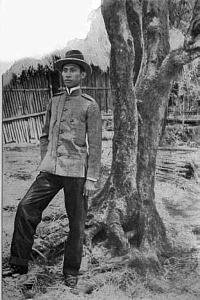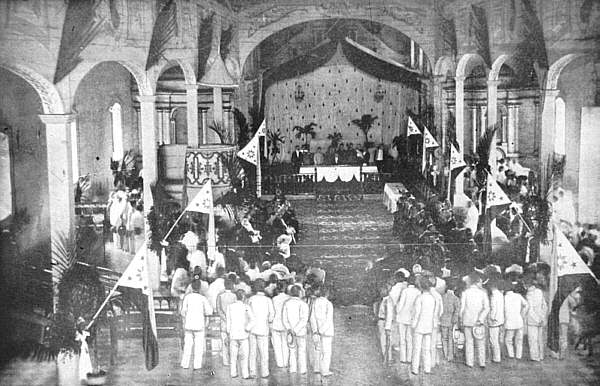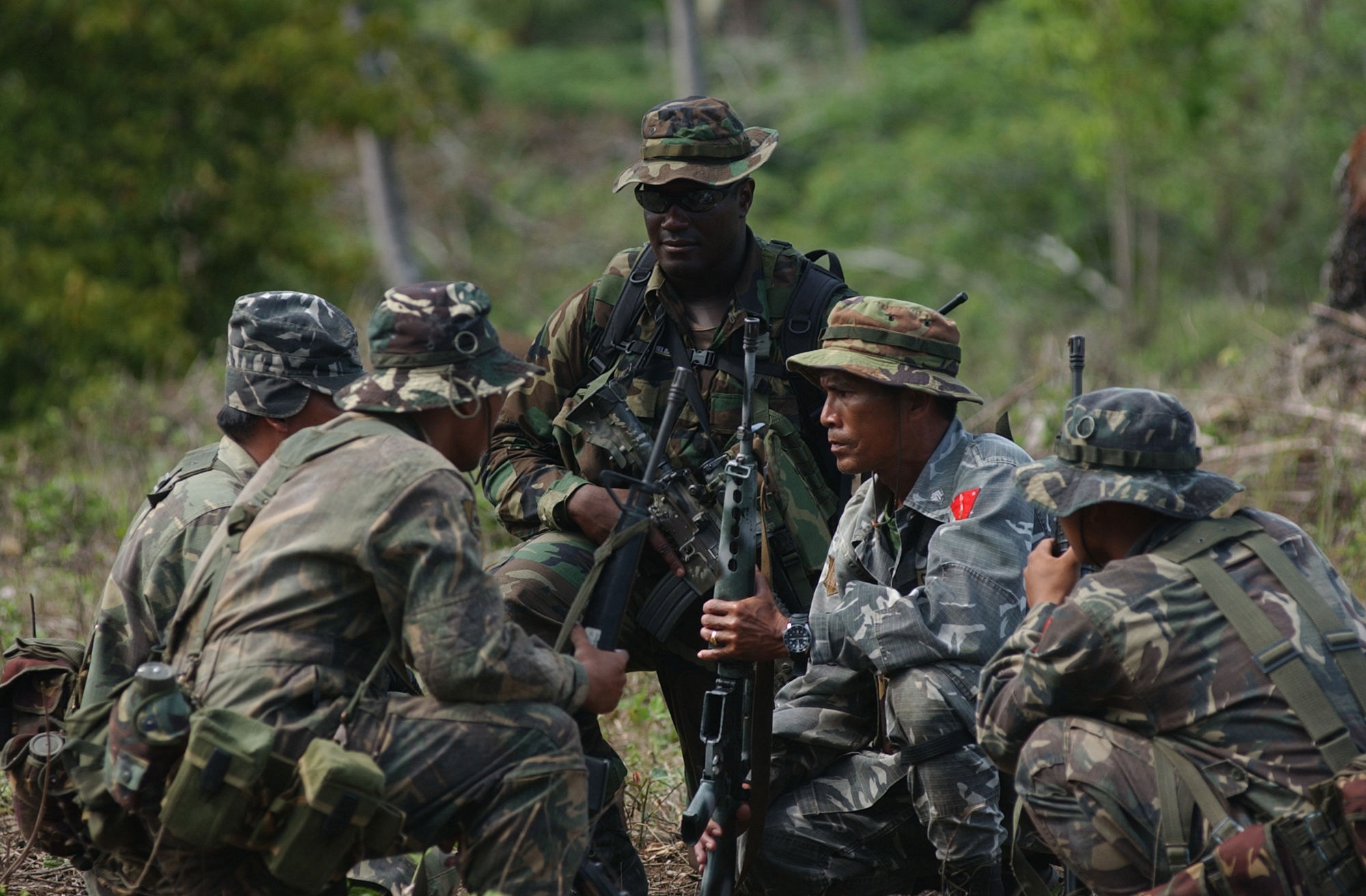|
Battle Of Sambat
The Battle of Sambat ( fil, Labanan sa Sambat, es, Batalla de Sambat) was the culminating battle of the first revolts of the Katipunan in Laguna. The battle was the final major action for the Katipunan chapter of "''Maluningning''" ending in the defeat of the rebels and martial law in Laguna province. Background After centuries of Spanish colonial rule, resentment towards the colonists, particularly the Dominican friars who owned much of the farmland in Laguna province, grew and grew with colonial and clerical powers abusing their powers and punishing the tenants of the farmlands if they refused to pay their dues. A good example of this is the eviction of the Rizal clan from Calamba town after their struggles with their Dominican tenants. José Rizal, national hero of the Philippines wrote about such issues in his 2 great novels, Noli me tangere, and El filibusterismo. The latter called for a revolution urgently. the call of revolt was answered by the Katipunan secret socie ... [...More Info...] [...Related Items...] OR: [Wikipedia] [Google] [Baidu] |
Santa Cruz, Laguna
Santa Cruz, officially the Municipality of Santa Cruz ( tgl, Bayan ng Santa Cruz), is a first class municipality of the Philippines, municipality and capital of the Philippine Province, province of Laguna (province), Laguna, Philippines. According to the 2020 census, it has a population of 123,574 people. Santa Cruz is situated on the banks of the Santa Cruz River (Philippines), Santa Cruz River which flows into the eastern part of Laguna de Bay. The town is bounded by the Bay on the north, by Lumban and Pagsanjan towns in the east, Pagsanjan and Magdalena towns in the south, and Pila in the west. It is from Manila via Calamba and Los Baños. It is accessible by land from Metro Manila passing through Rizal Province via Manila East Road or via South Luzon Expressway Santa Cruz is considered as the service and commercial center on the eastern part of the province. The town is composed of five barangays in the Poblacion area and 21 classified urban barangays. Although relatively ... [...More Info...] [...Related Items...] OR: [Wikipedia] [Google] [Baidu] |
Bolo Knife
A bolo ( tl, iták, ilo, bunéng, pag, baráng, ceb, súndang, hil, binangon) is a general term for traditional pre-colonial small to medium-sized single-edged swords or large knives of the Philippines that function as both tools and weapons. They are characterized by a curved wide blade that narrows towards the hilt, with pointed or blunt tips. Bolos are a common tool in the Philippines and are often compared to the machete. Description Bolos are differentiated from other Filipino swords and bladed implements by their dual use as both tools and weapons. They are characterized by a curved (usually convex) wide blade that narrows towards the hilt, with pointed or blunt tips. There are various types of bolos differing by ethnic group and purpose, ranging from large knives to short swords to specialized agricultural equipment. They had a wide range of use, from hunting to scything grass, opening coconuts, harvesting crops, or clearing dense brush. Most bolos are cheap and unorn ... [...More Info...] [...Related Items...] OR: [Wikipedia] [Google] [Baidu] |
Civil Guard (Philippines)
The Civil Guard in the Philippines ( es, Guardia Civil en las Filipinas, ) was the branch of the Spanish Civil Guard organized under the Captaincy General of the Philippines and a component of the Spanish Army. It was disbanded after the Spanish–American War. After the Philippine–American War, it was eventually replaced by the American colonial government with the Philippine Constabulary. History The ''Guardia Civil'' was introduced to the Philippines by the Spanish colonial government in 1868, during the term of Governor-General Carlos María de la Torre y Navacerrada. The organization began with a size of one division or around 1,200 men. By 1880, and this size was maintained until 1897, the ''Guardia Civil'' in the Philippines had a size of three divisions or more than 3,600 men. Two were stationed in Luzon and the third in the Visayas. Composition The majority of the civil guard consisted of non-''criollo'' natives, otherwise known then as '' indios'', making up approxi ... [...More Info...] [...Related Items...] OR: [Wikipedia] [Google] [Baidu] |
Nagcarlan Underground Cemetery
The Nagcarlan Underground Cemetery ( fil, Libingan sa Ilalim ng Lupa ng Nagcarlan) is a national historical landmark and museum in Barangay Bambang, Nagcarlan, Laguna, Nagcarlan, Laguna (province), Laguna supervised by the National Historical Commission of the Philippines. It was built in 1845 under the supervision of Franciscan priest, Fr. Vicente Velloc as a public burial site and its underground crypt exclusively for Spanish friars, prominent town citizens and members of elite Catholic families. It is dubbed as the only underground cemetery in the country. History Establishment of the Underground Cemetery Fr. Vicente Velloc supervised the establishment of a cemetery in Nagcarlan in 1845 below Mt. San Cristobal. Unlike the traditional Spanish cemeteries at that time, Fr. Velloc decided to build it away from the town's center. The cemetery is planned to serve as a public resting place for the people of the town while the underground chamber below the chapel of the cemetery wil ... [...More Info...] [...Related Items...] OR: [Wikipedia] [Google] [Baidu] |
Nueva Ecija
Nueva Ecija, officially the Province of Nueva Ecija ( tgl, Lalawigan ng Nueva Ecija , also ; ilo, Probinsia ti Nueva Ecija; pag, Luyag/Probinsia na Nueva Ecija; Kapampangan: ''Lalawigan/Probinsia ning Nueva Ecija''), is a landlocked province in the Philippines located in the Central Luzon region. Its capital is the city of Palayan, while Cabanatuan, its former capital, is the largest local government unit (LGU). Nueva Ecija borders, from the south clockwise, Bulacan, Pampanga, Tarlac, Pangasinan, Nueva Vizcaya and Aurora. The province is nationally known as the ''Rice Granary of the Philippines'', producing the largest rice yield in the country. History Precolonial era These first settlers included tribes of Ilongots ( Egungot) or Italons, Abaca and Buquids. Settlements were built along the banks following the river's undulations. The Ilongots, meaning people of the forest, were the fierce headhunters and animist tribes who occupied Carranglan and the mountainous terrain of ... [...More Info...] [...Related Items...] OR: [Wikipedia] [Google] [Baidu] |
Batangas
Batangas, officially the Province of Batangas ( tl, Lalawigan ng Batangas ), is a province in the Philippines located in the Calabarzon region on Luzon. Its capital is the city of Batangas, and is bordered by the provinces of Cavite and Laguna to the north, and Quezon to the east. Across the Verde Island Passages to the south is the island of Mindoro and to the west lies the South China Sea. Poetically, Batangas is often referred to by its ancient name Kumintáng. Batangas is one of the most popular tourist destinations near Metro Manila. It is home to the well-known Taal Volcano, one of the Decade Volcanoes, and Taal Heritage town, a small town that has ancestral houses and structures dating back to the 19th century. The province also has numerous beaches and diving spots including Anilao in Mabini, Sombrero Island in Tingloy, Ligpo Island and Sampaguita Beach in Bauan, Matabungkay in Lian, Punta Fuego in Nasugbu, Calatagan and Laiya in San Juan. All of the mar ... [...More Info...] [...Related Items...] OR: [Wikipedia] [Google] [Baidu] |
Bulacan
Bulacan, officially the Province of Bulacan ( tl, Lalawigan ng Bulacan), is a province in the Philippines located in the Central Luzon region. Its capital is the city of Malolos. Bulacan was established on August 15, 1578, and part of the Metro Luzon Urban Beltway Super Region. It has 569 barangays in 20 municipalities and four component cities (Baliuag, Malolos the provincial capital, Meycauayan, and San Jose del Monte). Bulacan is located immediately north of Metro Manila. Bordering Bulacan are the provinces of Pampanga to the west, Nueva Ecija to the north, Aurora and Quezon to the east, and Metro Manila and Rizal to the south. Bulacan also lies on the north-eastern shore of Manila Bay. In the 2020 census, Bulacan had a population of 3,708,890 people, the most populous in Central Luzon and the third most populous in the Philippines, after Cebu and Cavite. Bulacan's most populated city is San Jose del Monte, the most populated municipality is Santa Maria while the least po ... [...More Info...] [...Related Items...] OR: [Wikipedia] [Google] [Baidu] |
Pampanga
Pampanga, officially the Province of Pampanga ( pam, Lalawigan ning Pampanga; tl, Lalawigan ng Pampanga ), is a province in the Central Luzon region of the Philippines. Lying on the northern shore of Manila Bay, Pampanga is bordered by Tarlac to the north, Nueva Ecija to the northeast, Bulacan to the east, the Manila Bay to the central-south, Bataan to the southwest and Zambales to the west. Its capital is the City of San Fernando. Angeles City is the largest LGU but while geographically within Pampanga, it is classified as a first-class, highly urbanized city and has been governed independently of the province since it received its charter in 1964. The name ''La Pampanga'' was given by the Spaniards, who encountered natives living along the banks (''pampáng'') of the Pampanga River. Its creation in 1571 makes it the first Spanish province on Luzon Island (Cebu in Visayas is older as it was founded by the Spaniards in 1565). The town of Villa de Bacolor in the province bri ... [...More Info...] [...Related Items...] OR: [Wikipedia] [Google] [Baidu] |
Tarlac
Tarlac, officially the Province of Tarlac ( pam, Lalawigan ning Tarlac; pag, Luyag/Probinsia na Tarlac; ilo, Probinsia ti Tarlac; tgl, Lalawigan ng Tarlac; ), is a landlocked province in the Philippines located in the Central Luzon region. Its capital is the city of Tarlac. It is bounded on the north by the province of Pangasinan, Nueva Ecija on the east, Zambales on the west and Pampanga in the south. The province comprises three congressional districts and is subdivided into 17 municipalities and one city, Tarlac City, which is the provincial capital. The province is situated in the heartland of Luzon, in what is known as the Central Plain also spanning the neighbouring provinces of Pampanga, Pangasinan, Nueva Ecija and Bulacan. Tarlac covers a total land area of . Early in history, what came to be known as Valenzuela Ranch today was once a thickly-forested area, peopled by roving tribes of nomadic Aetas who are said to be the aboriginal settlers of the Philippines, and ... [...More Info...] [...Related Items...] OR: [Wikipedia] [Google] [Baidu] |
Cavite
Cavite, officially the Province of Cavite ( tl, Lalawigan ng Kabite; Chavacano: ''Provincia de Cavite''), is a province in the Philippines located in the Calabarzon region in Luzon. Located on the southern shores of Manila Bay and southwest of Manila, it is one of the most industrialized and fastest-growing provinces in the Philippines. As of 2020, it has a population of 4,344,829, making it the most populated province in the country if the independent cities of Cebu are excluded from Cebu's population figure. The ''de facto'' capital and seat of the government of the province is Trece Martires, although Imus is the official (''de jure'') capital while the City of Dasmariñas is the largest city in the province. For over 300 years, the province played an important role in both the country's colonial past and eventual fight for independence, earning it the title "Historical Capital of the Philippines". It became the cradle of the Philippine Revolution, which led to the r ... [...More Info...] [...Related Items...] OR: [Wikipedia] [Google] [Baidu] |




